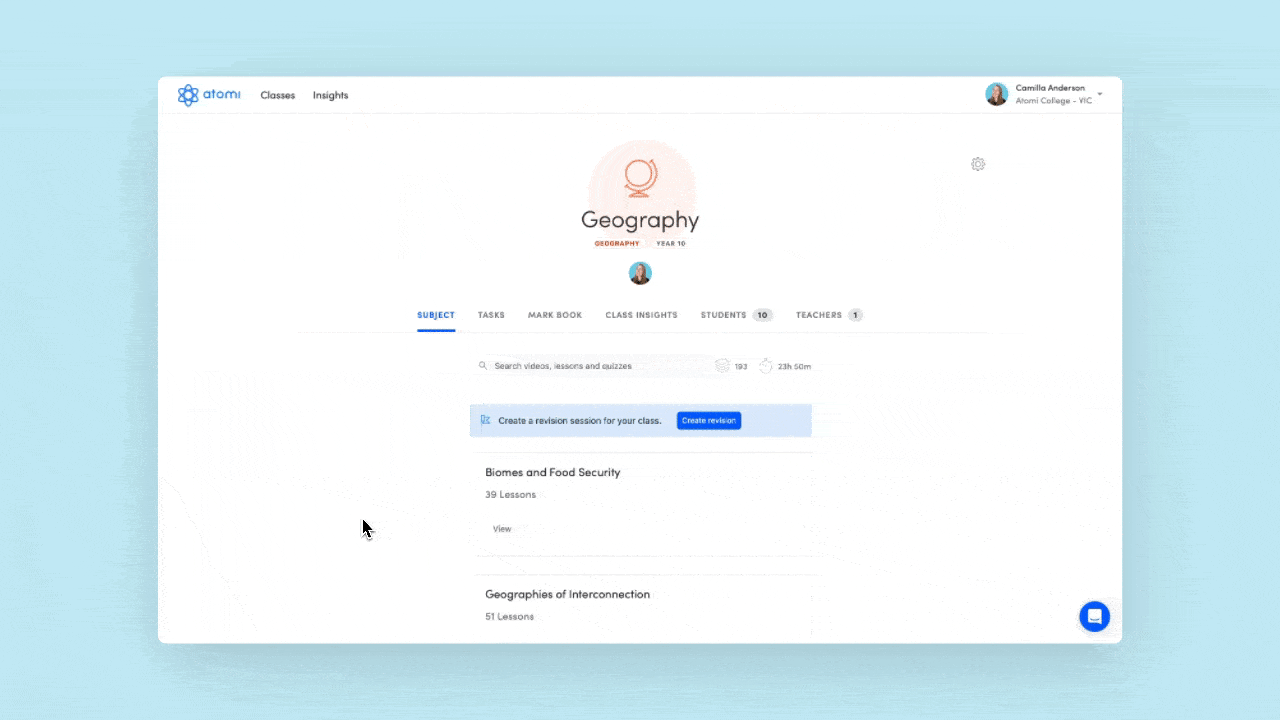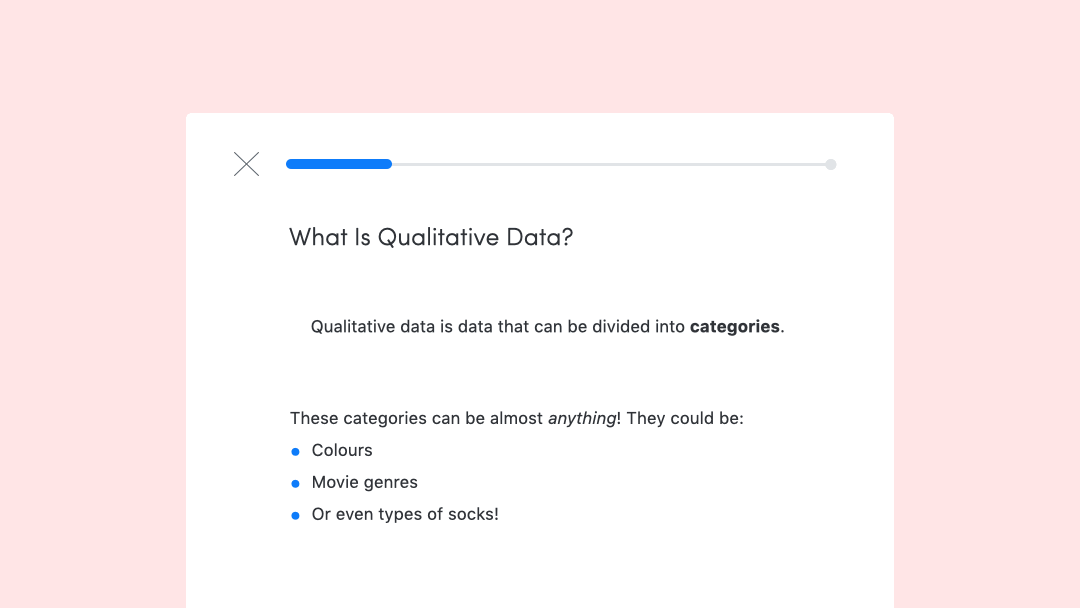6 Practical ways to implement spaced revision

About this guide
How often do we see students cramming for exams or pulling all-nighters to finish assignments? While this approach may help them weather the storm, it often leads to forgetting key material soon after, undermining long-term understanding. The secret to lasting learning lies in spaced revision. In this guide, we’ll unpack practical tips to help you implement spaced revision effectively for your students.
Understanding spaced revision
Spaced revision, or learning, is a process in which inter-study intervals separate learning. These inter-study intervals are the time between learning periods of the same content and can range from a few seconds to weeks and often months (O’Hare, 2023). Spaced revision often yields a “spacing effect” (Chen et al. 2018). This effect refers to the benefit that spaced learning has on both memory and content retrieval (Ebbinghaus, 1885). It is well accepted that this pedagogical approach can help increase student attainment, as through the repetitions, students can better understand the content (O’Hare, 2023). This is evident in class discussions, test results, and student performance.
It seems like the brain needs to forget and relearn content to become stored in long-term memory. As students revisit the material again and again, the neural connections in their brain are strengthened, making content retrieval easier, especially during stressful times like exams. In addition, by encouraging spaced revision, teachers can help reduce stress and build student confidence by eliminating last-minute cramming.
While the benefits are clear, creating consistently spaced revisions across all classes can be tough for students and teachers. However, with the right approach, it becomes manageable and highly effective.
Implementing Spaced Revision
Plan for success
Spaced revision works best when it is carefully built into your teaching timeline, not added on at the end. During the planning process, it can be helpful to schedule regular, low-effort returns to prior content. This can range from 5-minute exit ticket reflections to revision games in class time, where time permits. The goal is to think “little and often” and spread over months, not days.
Atomi tip → Don’t be afraid to revisit content from a previous term. It does not always have to relate to the content they are learning within that topic and can often be a nice change of pace for students.
Online tools can be a powerful way to plan and implement spaced revision. By using Atomi’s task scheduling feature at the start of the term, teachers can create spaced learning opportunities in advance, reducing the chance of forgetting to set them later on. Tasks can be scheduled to appear for students at specific times and dates, ensuring timely revision without adding extra pressure as the term progresses.

Low-stakes, high rewards
Frequent, low-stakes quizzes are a cornerstone of effective spaced retrieval. They support students in recalling key information and help identify learning gaps, without the added pressure of formal assessments. This feedback can be used by both educators and students:
- For student, it highlights strengths and areas for improvement, offering clear next steps on where to focus their efforts.
- For teachers, it can reveal whole-class patterns or individual student misconceptions, offering opportunities for timely intervention.
However, creating, administering and marking these low-stakes revision tests can be time-consuming for educators and may be deprioritised when class time becomes limited. Leaning on online tools like Atomi can help alleviate that pressure. Atomi quizzes can be completed either in class or at home, depending on class time restraints, and both offer the same positive outcome of spaced learning.
In addition, Atomi’s AI-driven feedback and marking can give students timely guidance on their strengths and areas for improvement, without adding to the teacher’s workload. A win for both students and teachers.

Content flashbacks
Embedding spaced revision into lessons is another way of consistently providing students with revision opportunities. Starting each lesson with a “flashback” to content and skills from last week or the previous term helps build memory and strengthens long-term retrieval.
Many educators begin lessons by revisiting what was covered previously, a great way to link learning and prevent lessons from existing in isolation. However, this approach can be taken further by encouraging students to connect current content with topics from earlier in the term (or even the year), prompting deeper thinking and long-term recall. Prompts like “3 things you remember about…?” or “3 questions you still have about …?” encourage students to reflect on prior learning. These can spark class discussions or serve as quick checks for understanding, allowing teachers to address misconceptions.
Interleaved practice
Interleaving involves mixing different topics instead of studying one at a time. Traditionally, most courses focus on mastering one core area before moving on to the next. While interleaving can feel challenging for students, who must juggle multiple topics simultaneously, it has been shown to boost retention and promote deeper thinking. However, it would not be a practice tip if we asked you to redesign your core modules.
Instead, try setting Atomi revision tasks that combine content from multiple topics. For example, combining questions from the current module with content from a previous term creates more opportunities for spaced revision and encourages deeper understanding, helping students move beyond rote learning.
Homework with memory in mind
Homework is an excellent tool for reinforcing what was taught in class and another great opportunity for spaced revision. Educators can take this even further by designing homework tasks that revisit earlier content, whether from earlier in the current module or even from a previous term. Even a single challenge question that links back to a past topic can help strengthen long-term retention.
Thankfully, with Atomi’s powerful task feature, educators can easily create and assign activities that draw on a range of content with minimal effort. Simply use the “Add Atomi Content” option to include an interactive lesson, video, or quiz for students to revisit. This creates more opportunities for spaced learning and helps break up the current content, keeping lessons varied and engaging.

Atomi tip → This is also an excellent opportunity to use Atomi’s cross-sharing feature to revisit content from previous year groups. Students often forget key skills and knowledge from earlier years, yet this foundational understanding is crucial for continued progress. By weaving in past content, teachers can help students make stronger connections and fill in any learning gaps.
Student responsibility
The most effective revision happens when students are engaged, invested, and take ownership of their learning. It's common to hear students say, “I don’t know where to start,” or “I don’t know what I don’t know.” This often shifts the responsibility back to the teacher to guide their revision efforts. However, encouraging students to take responsibility helps them build essential post-school skills like self-direction and independence and increases their investment in the learning process.
To start encouraging student responsibility, teachers can direct learners to the Atomi platform, which provides students with individualised strength scores. If students recently did very well in a quiz or practice, their strength will be high. However, after time, if they haven’t revised, their strength will begin to drop. This can be a good place to start for revision and be a visual reminder for spaced learning.
Looking back to move forward
The mayhem and anxiety accompanying exam season can make it tempting to treat revision as a checklist to get through, rather than as a chance to deepen understanding and build lasting connections. When students are regularly asked to review and reconnect with prior learning, they are no longer just preparing for a test, but reframing how they view learning. Helping students see the value in their learning boosts academic performance while nurturing skills and habits that will serve them well beyond the classroom.
References
O’Hare L, Stark P, Gittner A, McGuinness C, Thurston A and Biggart A (2023) A pilot randomized controlled trial comparing the effectiveness of different spaced learning models used during school examination revision: the SMART Spaces 24/10 model. Front. Educ. 8:1199617. doi: 10.3389/feduc.2023.1199617
Ebbinghaus, H. (1885). Über das gedächtnis: untersuchungen zur experimentellen psychologie. Duncker and Humblot: Leipzig.
Chen, O., Castro-Alonso, J. C., Paas, F., and Sweller, J. (2018). Extending cognitive load theory to incorporate working memory resource depletion: evidence from the spacing effect. Educ. Psychol. Rev. 30, 483–501. doi: 10.1007/s10648-017-9426-2
Subscribe to our newsletter
Get the latest teaching and learning insights delivered to your inbox.
You can unsubscribe at any time, no hard feelings.
Subscribe to our newsletter
Get the latest teaching and learning insights delivered to your inbox.
You can unsubscribe at any time, no hard feelings.
What's Atomi?
Easy to understand, super engaging, and matching what you’re learning in class. Available for 100s of subjects across your high school years.
With heaps of questions and smart AI feedback that shows you what you’ve nailed and what to work on—so you won’t just feel ready, you’ll be ready.
Improve your study game, get AI-driven tips tailored to you, keep tabs on your progress and unlock insights so you can always hit your goals.
What's Atomi?
Captivating and impactful video-first content, fit for all types of learners and grounded in the absolute must-have info of the high school curriculum.
Active recall quizzes, topic tests and exam practice enable students to get immediate feedback and build skills, while allowing teachers to differentiate instruction.
Create engaging learning experiences with easy-to-use tasks, get actionable insights to differentiate instruction and experience intelligent personalisation for your students.
What's Atomi?
Short, curriculum-specific videos and interactive content that’s easy to understand and backed by the latest research.
Active recall quizzes and practice sessions enable students to build their skills, put knowledge into practice and get feedback.
Our AI understands each student's progress and makes intelligent recommendations based on their strengths and weaknesses.




